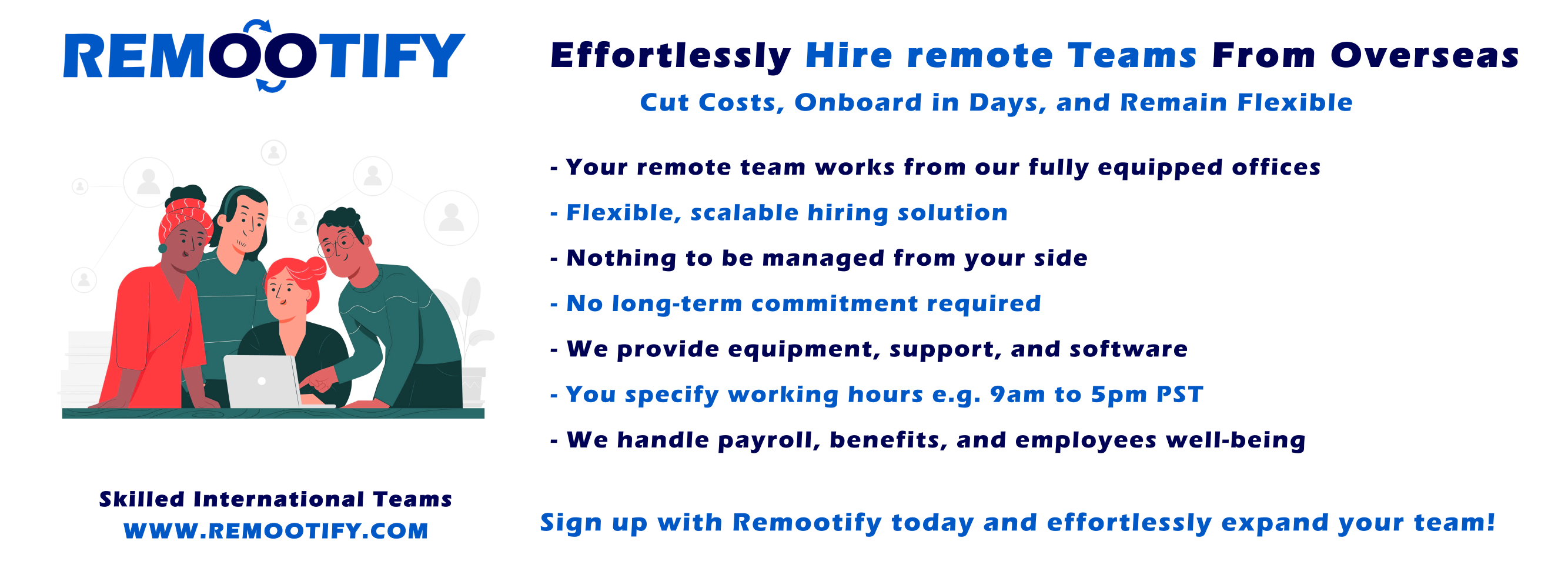Start hiring YOUR REMOTE TEAM, Today!
Enter your information below to start a discussion with one of our team members!

In the realm of business, payroll management is vital. But beneath the surface lies a lesser-known hero: the payroll ledger.
This article explores what a payroll ledger is and why it matters to businesses, shedding light on its role in ensuring accurate employee compensation and financial record-keeping.
key Takeaways
- Payroll ledgers are essential tools for maintaining detailed records of employee compensation transactions.
- They play a crucial role in ensuring accuracy, compliance, and transparency in payroll management.
- A payroll ledger includes employee information, earnings, deductions, payroll dates, and total expenses.
- Businesses of all sizes benefit from using payroll ledgers for efficient and error-free payroll processing.
- Challenges in ledger management include data entry errors, compliance issues, and staying updated with tax regulations.
- Payroll ledgers have a rich historical background, evolving from manual manuscripts to digital integration.
- They remain indispensable for financial transparency, compliance, and accountability in modern business operations.
What Is a Payroll Ledger?
- Definition: A payroll ledger is a specialized accounting record or document used to track and maintain detailed records of a company’s payroll transactions and financial data related to employee compensation.
- Purpose: The primary purpose of a payroll ledger is to ensure accurate and organized record-keeping of all financial aspects of employee compensation, including wages, salaries, bonuses, and deductions. It serves as a central repository for crucial payroll information.
The Vital Role of a Payroll Ledger in Payroll Management
- Data Compilation: A payroll ledger collects and consolidates essential payroll data, such as hours worked, hourly rates, salaries, tax withholdings, and benefit deductions, for each employee.
- Calculations: A Payroll ledger plays a pivotal role in calculating the total payroll expenses, taking into account all earnings and deductions.
- Documentation: It provides a historical record of past pay periods, which is valuable for reference and auditing purposes.
- Compliance: A payroll ledger assists in ensuring compliance with labor laws, tax regulations, and company policies, helping prevent errors and penalties.
Historical Perspective on Ledger Keeping
- Evolution: Ledger keeping has a rich historical background, dating back centuries to the advent of double-entry bookkeeping during the Renaissance. Ledgers were initially physical books where transactions were manually recorded.
- Transition to Digital: With technological advancements, ledgers have transitioned from physical books to digital formats, making record-keeping more efficient and accessible.
- Modern Importance: In the modern era, ledgers, including payroll ledgers, remain essential in maintaining financial transparency, facilitating audits, and ensuring accountability within organizations.
- Integration: Today, payroll ledgers are often integrated into digital accounting software, making it easier for businesses to manage payroll and generate reports for analysis and compliance.
Components of a Payroll Ledger
A. Employee Information
- Names and IDs
- Include the full names of all employees.
- Assign unique employee IDs for easy identification.
- Personal details
- Collect and record personal information such as addresses, contact numbers, and emergency contacts.
- Maintain records of employee start dates and positions held.
B. Earnings and Deductions
- Wages and salaries
- Record regular wages or salaries earned by employees.
- Differentiate between hourly rates, monthly salaries, or annual salaries.
- Overtime and bonuses
- Document any overtime hours worked and the corresponding pay rates.
- Record bonuses or incentives separately from regular earnings.
- Deductions (taxes, benefits, etc.)
- Include deductions for income tax, Social Security, and Medicare.
- List other deductions like health insurance premiums, retirement contributions, and loan repayments.
- Calculate and display net pay after deductions for each employee.
C. Payroll Dates and Periods
- Specify the pay periods, such as weekly, bi-weekly, or monthly.
- Include the dates for each pay period’s start and end.
- Clearly indicate the payday or payment date for each period.
D. Total Payroll Expenses
- Calculate and summarize the total expenses for each pay period.
- Include the total gross payroll (before deductions) and the total net payroll (after deductions) for the period.
- Provide an annual summary of payroll expenses for budgeting and financial reporting purposes.
Benefits of Maintaining a Payroll Ledger
A. Compliance with Regulations
- Ensures adherence to federal, state, and local labor laws and tax regulations.
- Helps in accurately calculating and withholding taxes, ensuring timely deposits.
- Provides documentation for government audits, demonstrating legal compliance.
- Reduces the risk of penalties and fines associated with non-compliance.
B. Accuracy in Payroll Processing
- Facilitates precise calculation of employee wages, including regular pay, overtime, bonuses, and deductions.
- Minimizes errors in payroll, such as overpayments or underpayments.
- Enhances payroll efficiency by automating calculations and reducing manual errors.
- Increases employee satisfaction as they receive the correct compensation promptly.
C. Employee Transparency and Trust
- Empowers employees with transparent information about their earnings, deductions, and benefits.
- Builds trust within the workforce, as employees can verify their pay and deductions.
- Reduces disputes and misunderstandings regarding payroll, leading to improved employee relations.
- Enhances employee morale and engagement by fostering a sense of fairness.
D. Auditing and Financial Reporting
- Serves as a comprehensive record of payroll transactions over time.
- Facilitates internal and external audits by providing a reliable source of financial data.
- Supports financial transparency by enabling the tracking of payroll expenses.
- Assists in the preparation of financial statements and tax filings.
E. Data Analysis for Decision-Making
- Offers valuable insights into labor costs, trends, and patterns through historical payroll data.
- Supports data-driven decision-making related to workforce planning and budgeting.
- Enables the identification of cost-saving opportunities, such as optimizing staffing levels.
- Enhances HR and management’s ability to make informed decisions about compensation and benefits.
How to Create and Maintain a Payroll Ledger?
- Choose the Right Tools and Software
- Research and evaluate payroll software options.
- Consider factors like your company size, budget, and specific payroll needs.
- Choose software that complies with tax regulations and offers necessary features (e.g., tax calculations, direct deposit, reporting).
- Set Up the Ledger Structure
- Determine the ledger’s format and layout, including columns for employee information, wages, deductions, and net pay.
- Define categories for different payroll components (e.g., regular salary, overtime, bonuses, taxes, benefits).
- Ensure the ledger’s structure aligns with your business’s reporting and compliance requirements.
- Record Payroll Data
- Collect and input employee information, such as names, addresses, Social Security numbers, and tax withholding details.
- Document hours worked, pay rates, and any variable earnings (e.g., commissions or tips).
- Deduct taxes (federal, state, local), employee benefits, and other deductions (e.g., retirement contributions, insurance premiums).
- Calculate gross pay, deductions, and net pay for each employee accurately.
- Keep records of pay periods, pay dates, and pay frequencies.
- Regularly Update and Reconcile
- Update the payroll ledger with each pay cycle, ensuring accuracy and compliance with changing tax laws or company policies.
- Reconcile payroll data with financial records to identify discrepancies.
- Review and resolve any payroll errors promptly.
- Conduct periodic audits to verify payroll accuracy and compliance with legal requirements.
- Keep historical payroll records for a specified retention period (often several years) as required by law.
Common Challenges in Payroll Ledger Management
A. Data entry errors
- Data entry errors can occur when manually inputting employee information, working hours, or wage rates.
- These errors can lead to incorrect calculations of salaries, overtime, and deductions.
- Mistakes in data entry can result in overpayment or underpayment of employees, leading to dissatisfaction and potential legal issues.
- Automation tools and double-checking data can help mitigate data entry errors.
B. Compliance issues
- Payroll management must adhere to various federal, state, and local laws and regulations.
- Failure to comply with labor laws, minimum wage laws, or overtime regulations can result in penalties and legal actions.
- Compliance issues can arise due to misclassification of employees, failure to provide required benefits, or improper tax withholdings.
- Staying informed about changing regulations and seeking legal counsel when necessary is crucial to avoid compliance issues.
C. Keeping up with tax changes
- Tax laws and rates are subject to frequent changes at both federal and state levels.
- Staying current with tax changes can be challenging and time-consuming.
- Failing to update payroll systems and tax calculations to reflect these changes can lead to under or over-withholding of taxes.
- Employers must regularly review tax updates and adapt their payroll systems accordingly to ensure accuracy.
D. Confidentiality and data security
- Payroll data contains sensitive personal and financial information, making it a prime target for cyberattacks and data breaches.
- Maintaining the confidentiality and security of employee data is critical to complying with data protection laws and regulations like GDPR and HIPAA.
- Inadequate security measures can result in unauthorized access, identity theft, and reputational damage.
- Employers should implement strong encryption, access controls, and cybersecurity protocols to protect payroll data from security breaches.
Payroll Ledgers and Small Businesses
Simplified Ledger Options for Small Businesses
- Basic Ledger Software: Utilizing user-friendly software for payroll tracking.
- Spreadsheet Templates: Creating customized Excel or Google Sheets templates.
- Cloud-Based Solutions: Using online payroll management platforms.
- Outsourcing Ledger Services: Hiring a payroll service provider.
Outsourcing vs. In-House Ledger Management
| Aspect | Outsourcing Ledger Management | In-House Ledger Management |
|---|---|---|
| Cost | Regular fees, potential cost savings. | Higher initial and ongoing costs. |
| Expertise | Access to specialized professionals. | Requires hiring and training. |
| Scalability | Easily adaptable to business changes. | May require staff adjustments. |
| Control | Less direct control, more focus on core operations. | Full control, but resource-intensive. |
| Risk Management | Shared liability for errors or fraud. | Full risk management responsibility. |
| Flexibility | Customizable processes, business focus. | More rigid internal processes. |
| Data Security | Robust security with reputable providers. | Internal data security control. |
| Compliance | Specialized in compliance and regulations. | Internal compliance monitoring. |
Tips for Small Business Owners
- Keep Accurate Records: Maintain meticulous records of employee hours, wages, and tax deductions.
- Stay Informed: Keep up-to-date with tax laws and regulations to ensure compliance.
- Evaluate Your Needs: Assess whether in-house or outsourcing is the best payroll management solution for your business.
- Automate Where Possible: Use payroll software to automate calculations and reduce errors.
- Consider Scalability: Choose a payroll system that can grow with your business.
- Seek Professional Advice: Consult with accountants or payroll experts for guidance.
- Secure Sensitive Data: Implement robust security measures to protect employee information.
- Employee Communication: Clearly communicate payroll-related policies to your staff.
- Monitor Changes: Stay vigilant about changes in payroll laws and adapt accordingly.
- Budget Appropriately: Allocate resources for payroll management in your business budget.
—
Conclusion
The payroll ledger, often overlooked but critical, is the backbone of accurate payroll management. From its historical roots to its modern-day digital presence, it ensures financial transparency and compliance.
Understanding the payroll ledger’s role is key to effective financial management, benefiting businesses of all sizes.
—
FAQs
What is a payroll ledger?
A payroll ledger is a comprehensive record-keeping tool used to track and maintain detailed records of an organization’s payroll transactions and financial data related to employee compensation.
What information is typically included in a payroll ledger?
A payroll ledger typically includes employee information (names, IDs, personal details), earnings and deductions (wages, salaries, taxes, benefits), payroll dates and periods, and total payroll expenses.
Can a payroll ledger be created manually, or is software necessary?
While it’s possible to create a payroll ledger manually, most businesses use payroll software or accounting software to streamline the process and reduce the risk of errors.
How often should a payroll ledger be updated?
Payroll ledgers should be updated regularly, typically after each pay period, to ensure accurate and up-to-date financial records.





